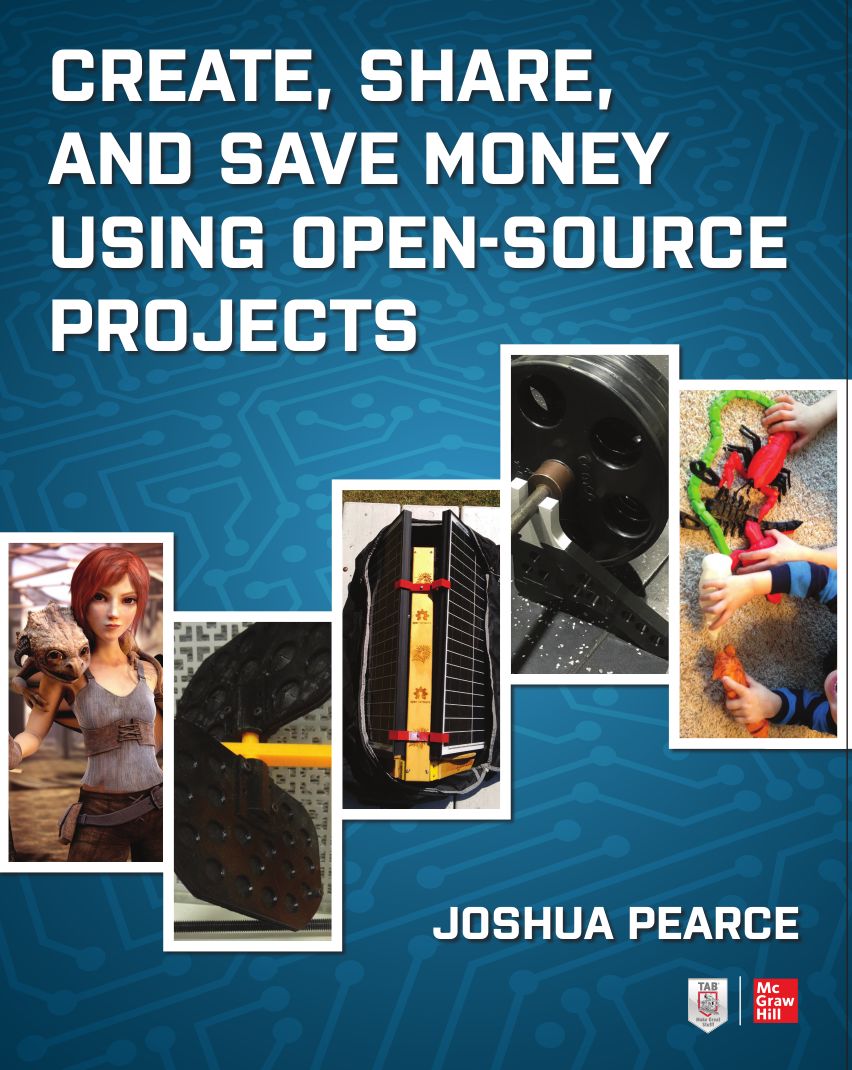Although the stock market has seen some of its best days, far too many Americans are suffering through the pandemic. Fortunately, there is a rapidly growing approach that can help people in the real world enjoy wealth even if they have very little money. The trick is harnessing the power of 21st century sharing and digital technologies. Plugging into the global sharing community provides everyone with access to millions of free and open source products. To learn more about this approach we sat down with Michigan Tech engineering professor Joshua Pearce, who is the author of Create, Share, and Save Money Using Open-Source Projects.

Free wealth is pretty appealing. How can anyone be wealthy with almost no money?
At first blush, this may sound impossible. Yet, it is happening now and completely legal. The scientific research community has known about this for sometime and I have saved millions of dollars using open source sharing in my own lab. The massive Internet companies also all use it. Think: Google and Facebook, who are both massive users and contributors to open source. Knowledge has a unique property among commodities. Unlike gold or wheat, it not only retains value when it is shared, but it can rapidly increase in value. The Internet has enabled unlimited scaling of this process as the price of information sharing approaches zero. Free repositories of books, educational materials (including whole university courses), movies, how-tos, maps, music, photographs, art, software, and recipes offer everyone with Internet access, historically-unprecedented access to real wealth. You have access to this wealth even if you do not have a lot of money.
Ok – most people can see how open source works in software, books or videos, but what about physical products?
The free and open source process is expanding further into the physical world and everyone now has the opportunity to radically reduce the cost of just about everything available at Wal-mart or Amazon including products like toys, electronics, kitchenware and clothing. The combination of open source sharing and digital manufacturing – using 3-D printers and similar tools like laser cutters and CNC mills – enables anyone to make complex valuable products for themselves.
What if my family does not have access to the tools?
Families can get the tools for themselves or share them at makerspaces or local libraries. Now everyone can easily customize the products to fit their exact needs. There are already millions of free designs representing billions of dollars of value available for everyone. The cost of entry is small because the designs of the tools are also free and open source. For example, the most popular 3-D printer is open source and costs around $200.
If I bought an open source 3-D printer – how long until I make my money back?
It depends how much you use it and on what, but most users could make it back in a weekend. A recent study showed a typical American family can 3-D print 20 common household products from a kg of plastic for $18, while saving between $300 and $2,000 in purchases. There was nothing special about the 20 products – from cell phone cases to toys. They represented an insignificant fraction of the millions of designs available. The 3-D printed products were better than what is available in any store as they can be customized and personalized. 20 products could be printed in a weekend and literally pay for the 3-D printer in cash savings.
We are swimming in plastic waste. Is it possible to use that for 3-D printing rather than creating more?
Yes, absolutely and you can save more money at the same time! The way to really knock the bottom out of product’s price is to source the raw materials from waste. This is less gross than it sounds. This is possible for a dizzying array of products because of recent improvements in small-scale recycling processes and recyclebots, which enable people to easily make valuable products from waste directly while cleaning and sterilizing it in the process. It is pretty simple. Run your plastic waste through the dishwasher, grind it up in an open source grinder, and then turn it into filament with a recyclebot. The filament is then all ready to turn into anything you might want.
Best of all, these green custom creations can be had for a small fraction of the cost of what the proprietary system has available. Several studies found that normally a custom product can be made for less than the sales tax on a conventional product – all the same function, better custom form, and almost no cost.
The open source approach looks like it works great for software, media, and now plastic products – what about big ticket items?
Saving money by making use of free and open-source technologies works on a wide range of products – it does not stop with things you can fit in a bread box. There are even open source designs for big-ticket items, including housing from the Open Building Institute and electricity from open source solar photovoltaic systems designs. There are many ways a family can thrive while employ open source resources on a small scale to live a more economical and sustainable lifestyle. In the book I detail open-source software and hardware to save money including:
- Digital photographs and videos
- Music, software, and instruments
- Scientific equipment
- Paper and audio books
- Maps and GIS data
- Patterns for clothing
- Security systems
- Cars
- Electricity and much more.
It is time for everyone to create, share, and save money using open-source projects!
For free links to everything covered in Create, Share, and Save Money Using Open-Source Projects

